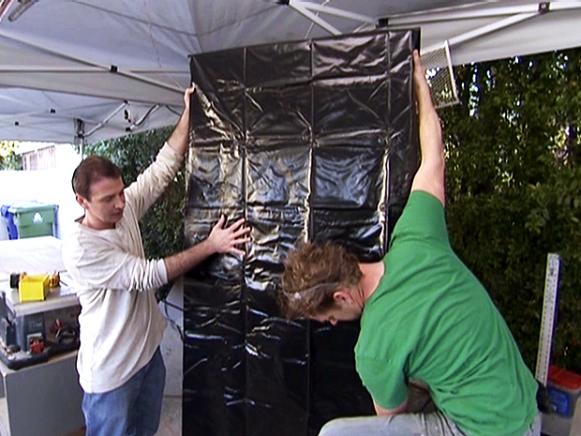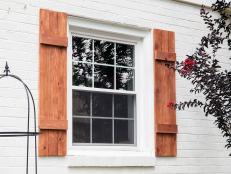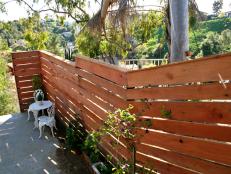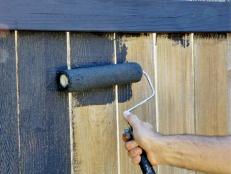How to Make a Slate Water-Wall Feature

Tools and Materials:
air compressor and hoses and a finish nailer
jig saw, table saw and miter saw
tape measure and a pencil
safety glasses
screw gun
soldering torch
staple gun
one sheet of 3/4” oak plywood
2x2 lumber
two sheets of tile backer board
drill press or drill gune with a tile drill bit
12"x12" natural slate tile
pond liner
one container for fountain base
four casters
four 10’ pieces of copper pipe
one shut off for 1/2” pipe
one recirculating pump
one adapter for pump - 1/2” copper
two 1/2” copper end caps and two 1/2” copper tees

Steps:

1. Build the frame. Cut the sides of the frame. If space permits, the base should be deeper at the bottom than the top. If the tile slopes outward at the bottom, there is less chance of splashing. Our frame is 7-feet tall with a slope of 3 inches at the top down to 12 inches at the bottom.
2. Add the face of the water wall to the frame. Try to size the width of the wall to fit your tile, so it doesn’t have to be cut.
If you are attaching the tiles to the wall with screws, use a piece of 3/4” plywood for the face of the water wall and cover it with pond liner. If you are adhering and grouting the tile to the wall, use a piece of tile backer board for the frame. Run a 2x2 piece of lumber down each vertical side of the wall to create a trough.
3. Build the base. If you’re using a pre-made container for the basin, build the base to fit. If you’re using a flexible pond liner, build the base to suit your fountain.
4. Make the base out of 3/4” plywood. Cut the sides to be 1 inch taller than your basin, or about 12 inches deep if you’re using a liner.
5. Cut all pieces using a table saw and miter saw, and then assemble using glue and nails. Cut the sides to hang below the base by about 2 inches to cover the casters. We’re using casters to make the fountain easier to move. Cover the inside of pond liner to waterproof it or insert the basin. Screw or staple the liner to the plywood at the top of base so it won't affect the seal. You can cover the screws or staples with wood trim.

6. Mount the wall frame to the base using screws and glue. Make sure the back of the fountain wall is perpendicular to the base so the pipe can run straight up the back.
7. There are two options for tiling the wall of the fountain. You can glue and grout the tile, like you would on a countertop or backsplash, or you can drill and screw the tiles like you’d install siding or shingles. If screwing the tile onto the plywood, drill two holes in each tile, about 1-1/2” in from each corner.
8. Starting at the bottom, screw the tiles to the wall, working your way up and overlapping tiles about 3 inches as you go. This will put the screw holes behind the tile above them, so there won’t be any leaks. Use a level and painter’s tape to make sure you adhere the tiles evenly.
9. Measure the height and width of the finished tile wall.

10. Solder together a tube that goes up the back of the tile wall and splits with a tee to each side. The top of the “T” should be about 1-inch smaller than your wall.
11. Before soldering in top of the “T”, drill a series of 1/8” holes in the pipe, about 1 inch apart. Solder end caps on the pipes, then solder them to the main leg of the “T”.
12. Use an adapter to fit the output of the pump to the copper line. Put a shut-off valve in the line to control water flow.
13. Fill the basin with clean water and turn on the pump. Use the shut-off valve to increase or decrease the water flow to get the level you want.













































